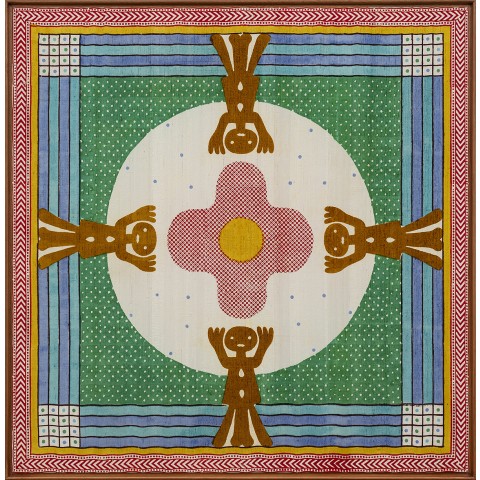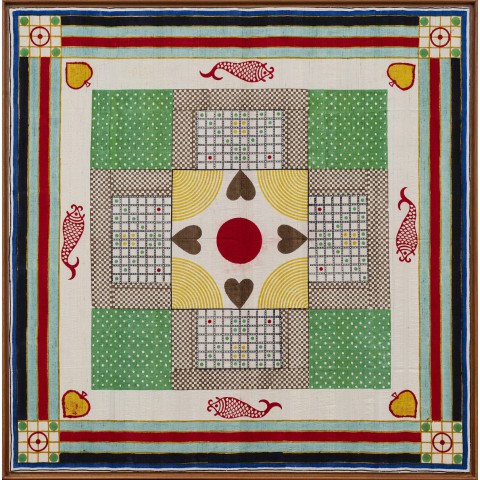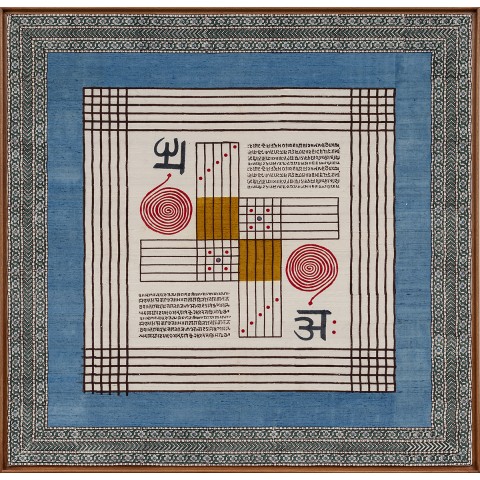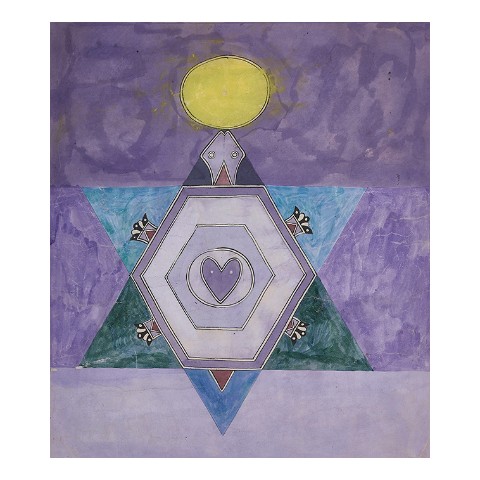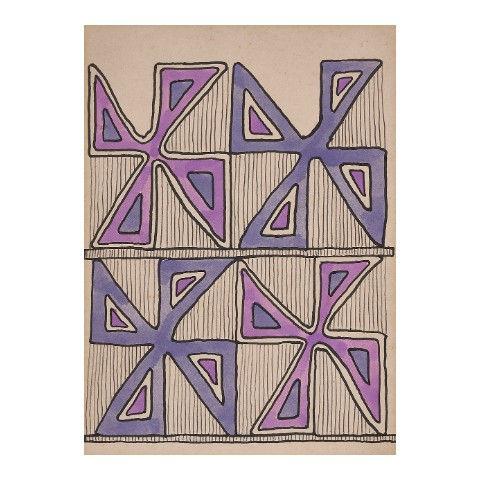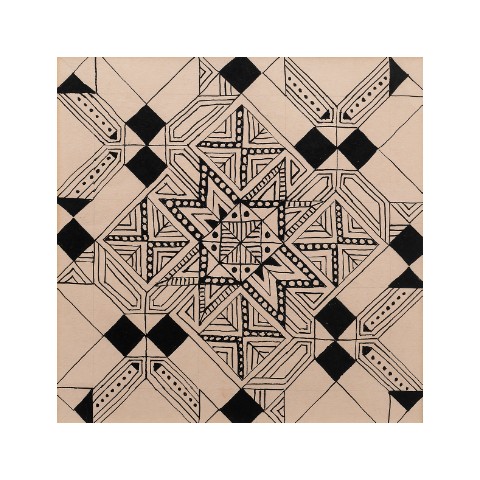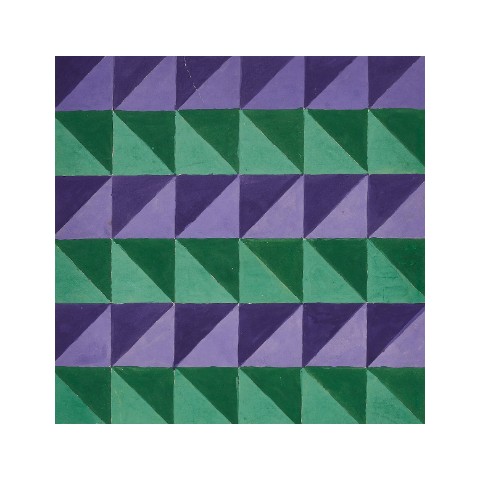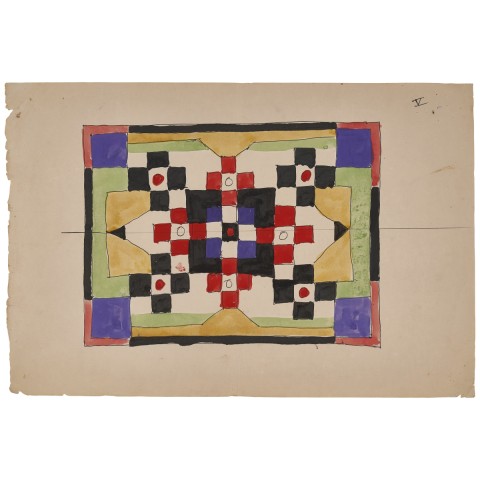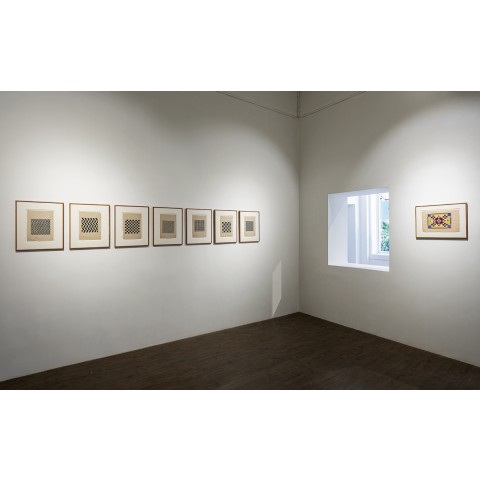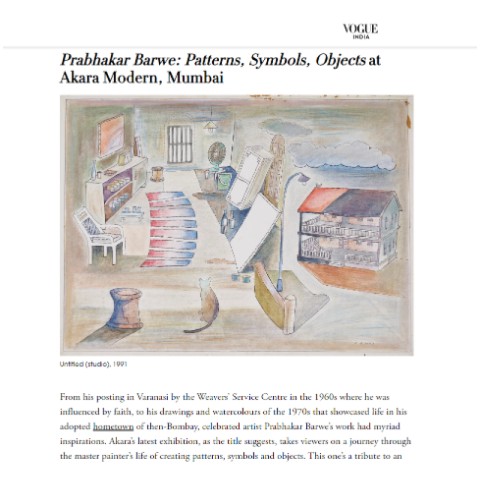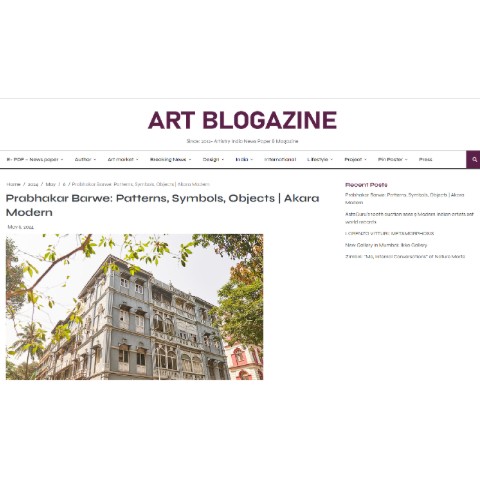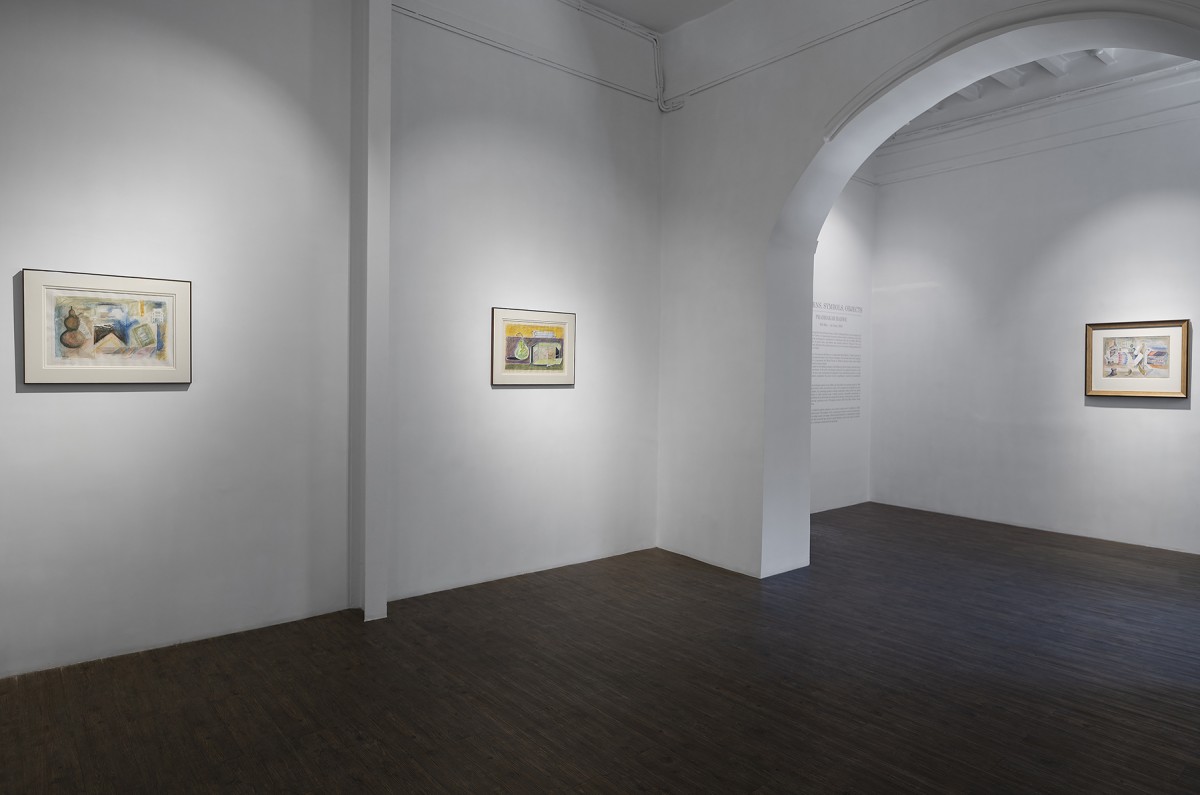
PRABHAKAR BARWE: PATTERNS, SYMBOLS, OBJECTS
May 09 - June 20 , 2024
Not long
after graduating from the JJ School of art in 1959, Prabhakar Barwe took a designer’s
job at the Weavers’ Service Centre, an organisation founded by Pupul Jayakar in
Madras in the 1950s with the aim of bringing contemporary sensibilities to
traditional crafts. By the 1960s, WSC had branches in a number of major cities,
and Barwe was initially posted to Varanasi. The city’s traditions of faith
deeply influenced his artistic practice even as he set about drawing patterns
for local artisans to copy on fabric.
The
earliest painting in the present exhibition is a watercolour from Barwe’s
‘Tantric’ period. It employs some geometric patterns akin to his work as a
designer, but overlays these with symbolic figuration. Specifically, it
represents the ‘World Turtle’ or Vishnu’s Kurma
avatar, and a bright sun against a background of mauve bands.
The artist
gained a transfer to the Bombay outpost of the Weavers’ Service Centre and the
bulk of the drawings and watercolours in the show are designs created in his
adopted hometown in the 1970s. The fact that we have such well-preserved
examples of his professional practice is a sign that he and his admirers
considered the pieces to have significance beyond the immediately utilitarian.
Finally, we
have three paintings created in the 1990s, not long before his untimely death
in 1995. Two of these are characteristic of the style that has come to be
recognized as inimitably his own. Created in mellow shades, the paintings
gesture towards landscapes within which are placed objects out of proportion to
their natural scale, evoking uncanny, dreamlike associations in viewers. These
are paintings of an artist who has absorbed the lessons of abstraction,
surrealism, Indian miniature painting traditions and of European masters like
Paul Klee without being beholden to any of them.
The last
painting is a relatively realistic depiction of an artist’s studio and of a
building in which the studio is presumably housed. The modesty of the
arrangement creates a mood of contentment, suggesting this is all an artist
needs to be happy. Barwe himself adhered to a philosophy of simple living, one
from which the art world has moved a great distance in the years since his
death, heightening the sense of nostalgia contained in the painting.

